How to prune a plum tree: easy steps to keep cordon, bush or pyramid forms in top condition
Learning how to prune a plum tree properly will keep them looking their best and give your fruit harvest a boost
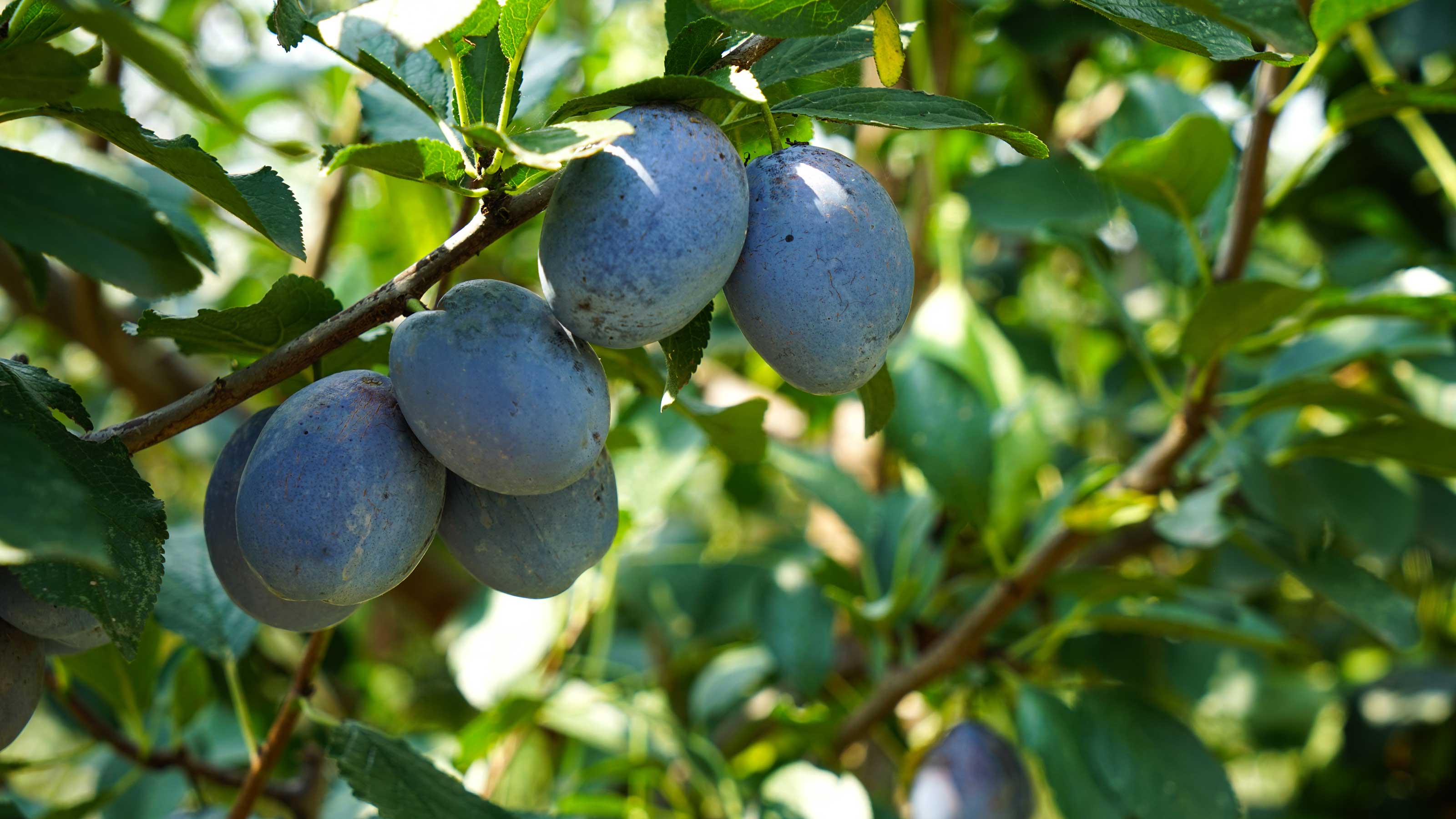
Need to learn how to prune a plum tree? We've got you covered. It's not particularly tricky, but for the best results, there are some tips you should know before you get snipping with your secateurs.
The general idea when pruning plums is to make it easier for both air and light to penetrate the trees' canopy and work their magic on those juicy fruits. Without proper pruning, plum trees struggle to support and nourish crops, and eventually stop trying. Don't let that happen! Be consistent, and you will have healthier trees and much tastier yields. What's more, pruning also helps with any training methods, keeping them in an orderly shape. All in all, it's a crucial step in learning how to grow plums successfully.
There are three main ways to prune a plum tree, and we've explained all of them below. You'll also find tips on the best time to carry out this garden job, as well as advice on common problems.
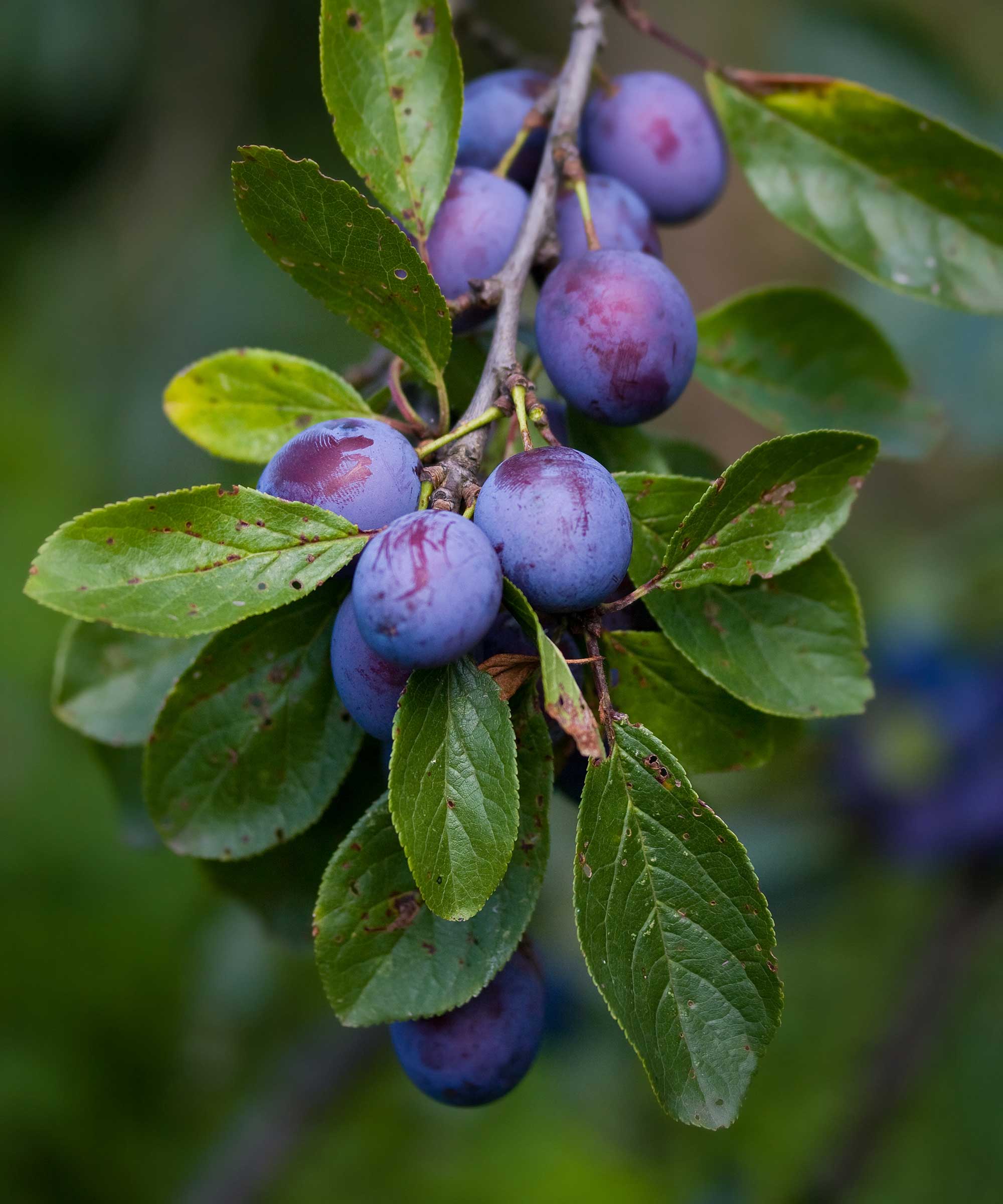
Learning how to prune a plum tree will reward you with a healthier plant with better yields
How to prune a plum tree using the bush method
Pay attention to the type of training you are applying to your plum tree. The overall shape of the tree has a bearing on the cuts you make. Generally speaking, bush forms are less demanding.
Growing your plum tree in a bush form – a natural-looking structure with a couple of feet of clear trunk topped by an open-centered canopy – is a very popular approach and produces good, easy-to-pick yields. They're versatile, too, as the freestanding trees can be planted amongst a lawn or even in a border.
The first three years call for a formative pruning approach – similar to apples and pears (although plums require less precision).
- Start with a feathered maiden tree – this is a one-year-old tree that consists of a stem with laterals (side shoots).
- In the first spring, pick three or four well-spaced laterals that are around 75cm (2½ft) from the ground – these will form your primary branches over time. Cut these back by around two thirds, then cut the central stem back to just above the top lateral, as says the RHS. Any shoots below the chosen laterals can be removed.
- The following spring, your chosen laterals should have produced their own shoots. Shorten the strongest by half, cutting back to an outward-facing bud. Remove weak shoots, or ones that are poorly positioned. If a secondary central leader has formed, remove this, too.
- Continue to develop your plum tree's framework in the third spring. Remember, you're aiming to establish an open crown.
- By the fourth year, your plum tree should be well-established. Now, all you really need to do in terms of pruning is thin it out, and this can be done in summer rather than spring. Lucy Chamberlain, fruit and veg expert of Amateur Gardening says, ‘Freestanding trees can simply have lofty or wayward stems cut out to a well-placed side-shoot, or back to the main branch.’ Remove any branches that are crossing over one another, diseased, or growing vertically, too. You should also remove any buds developing on the lower trunk and any suckers growing from the rootstock, advises the RHS.
Looking for more pruning advice? Our guides on how to prune shrubs and pruning raspberries have lots of useful tips.
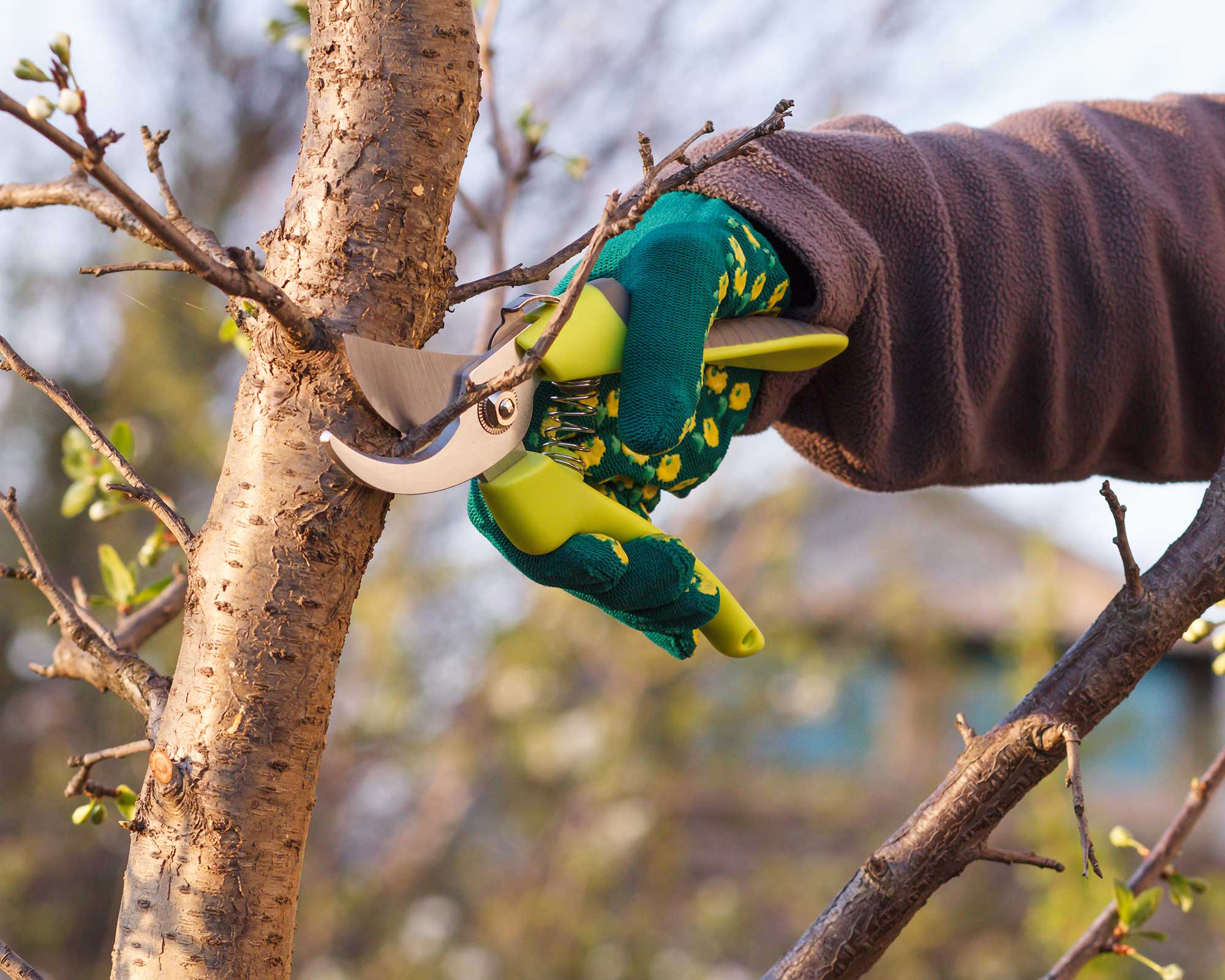
Once your tree is established, you can thin out the branches where needed and remove any shoots lower down on the trunk in summer
How to prune a plum tree using the pyramid method
Pyramid-trained plums are another type of freestanding form but are often smaller than bush-trained ones. The lower branches are longer than the top ones, resulting in the pyramid shape.
- The initial pruning is the same as that of the bush method, by picking your chosen laterals, removing others, and cutting back the central stem. This should be done in spring.
- The following summer (typically in July), cut back branches to about 8in (20cm). Make your cuts above a downward or outward-pointing bud. Side shoots from these branches can be pruned back to around 6in, as says the RHS. Train the leading stem to a stake.
- For the subsequent years, cut back the central stem every April by two thirds, until it reaches the desired height. After this, cut it back each May by an inch or less, pruning just above a leaf.
- In summer, remove any competing vertical shoots, and continue to cut back branch leaders and side shoots to around 8in and 6in respectively. Remove any damaged or diseased wood and over-lapping branches where necessary.
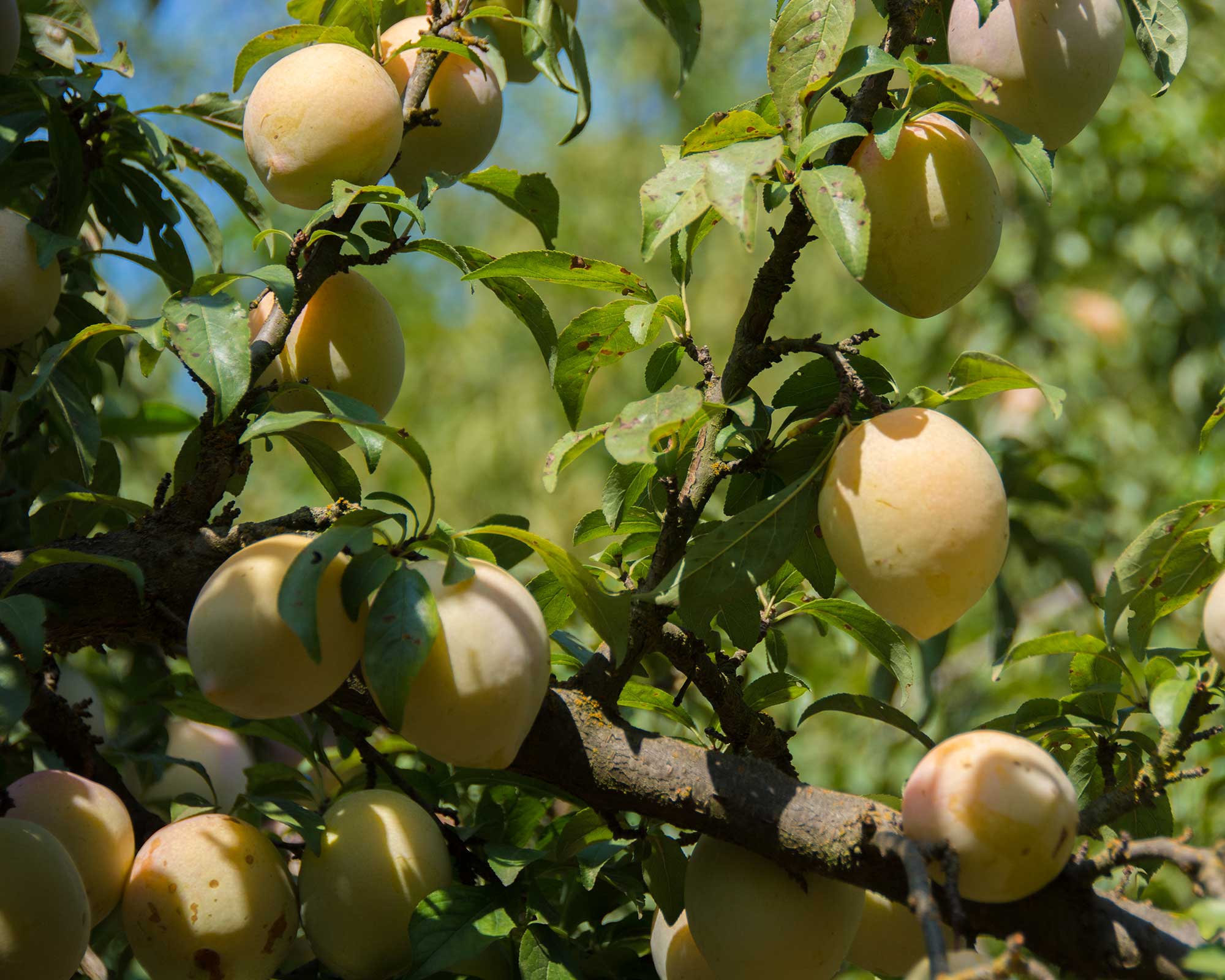
There are different pruning methods depending on the shape you are trying to create for your plum tree
How to prune a plum tree using the cordon method
The cordon method is a great choice if you're looking for small garden ideas, as these forms of tree take up very little room. They take on a columnar structure, with short side shoots bearing masses of fruit.
They're quite straightforward to prune:
- In the first spring, cut back side shoots, leaving four buds on each. Cut the central stem back by one third if this hasn't been done before you bought it.
- After the first year, continue to cut back the side shoots as above every summer (around mid-August). Side shoots growing from side shoots can be cut back to one or two leaves above the basal cluster.
- Once your tree has grown to the desired height, prune any new growth of the central stem back to one leaf each year.
Short on space but still want to grow fruit crops? Our guide to the best fruit trees to grow in pots might also come in handy.
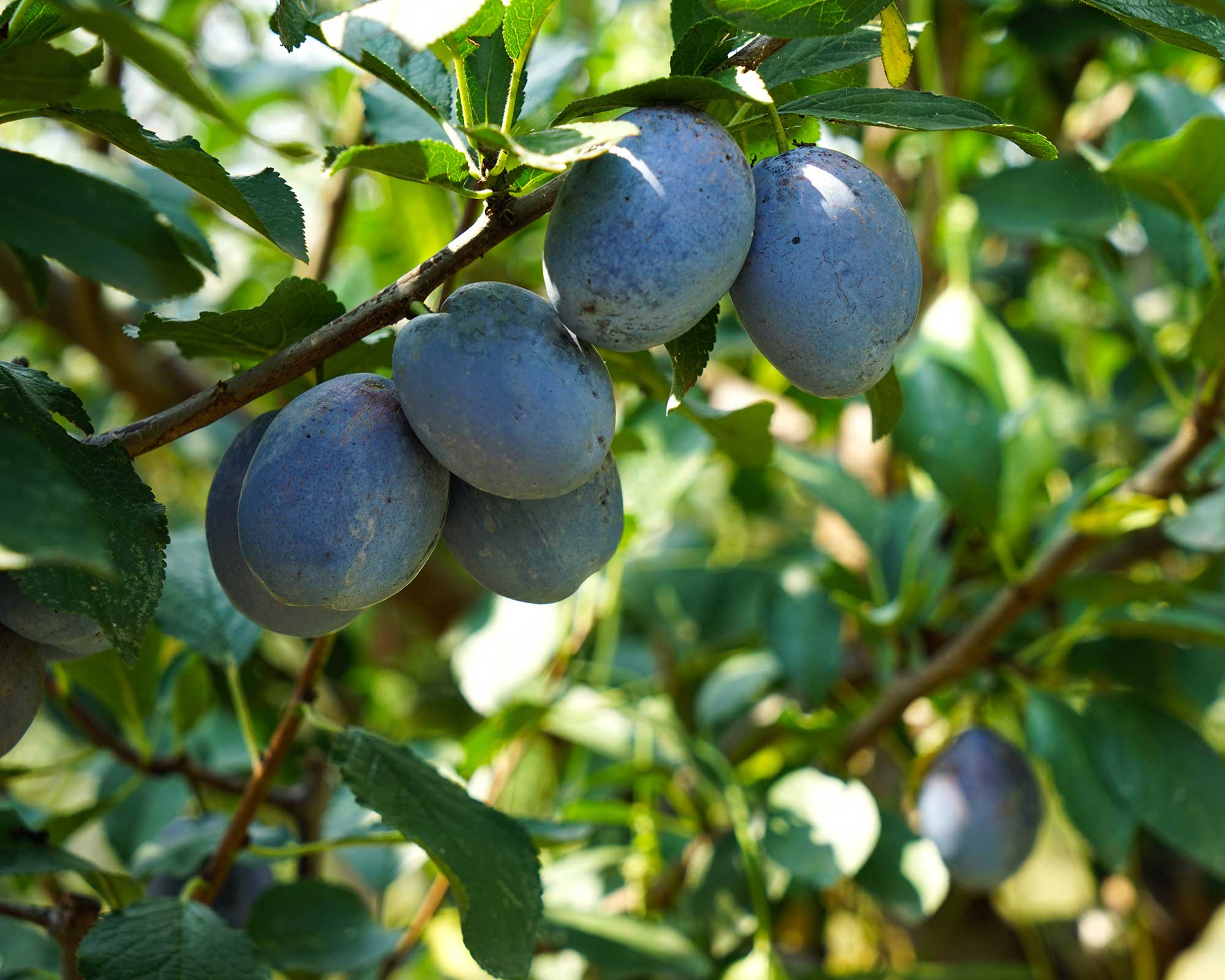
You can grow a plum tree in a smaller space – just use the cordon method and choose a variety which is naturally compact
When should you prune a plum tree?
Established plum trees – as with other stone fruits – need to be pruned in summer when in leaf. Young trees should ideally be pruned before bud burst in spring.
Don't trim when the tree is in flower and never prune in winter during dormancy – this can expose the tree to the risk of silver leaf disease and bacterial canker.
If you are looking for winter garden jobs, you can find plenty to keep busy with in our guide.
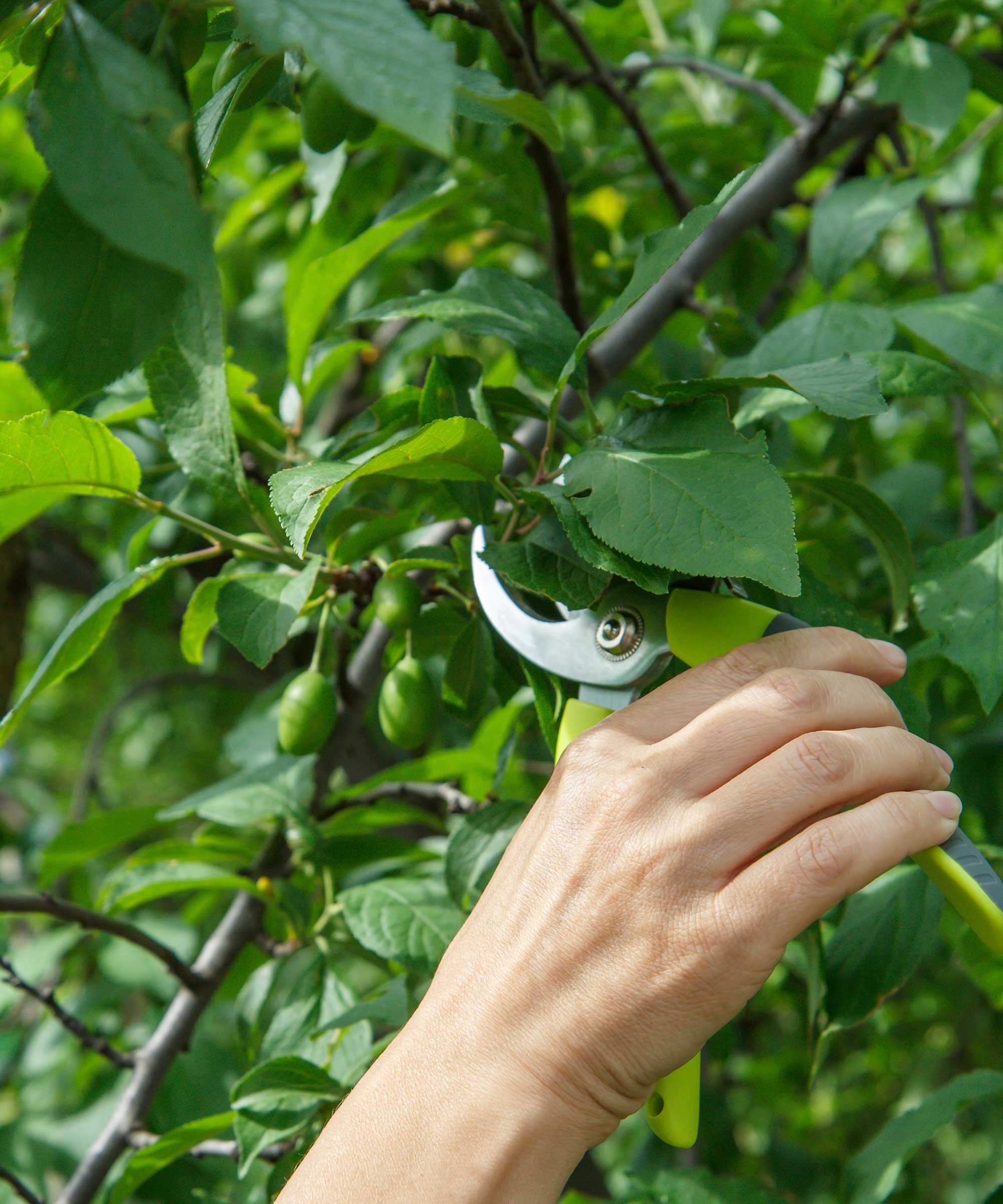
Always avoid pruning a plum tree in winter
How do you prune a neglected tree?
If you have a plum tree that's in need of some serious TLC, then the best approach is to go slow and steady, completing the process over several years. Look to the bigger picture and aim to prune back to establish a well-balanced form, with the center of the crown open.
If you prune back some areas hard, you'll be greeted with masses of new shoots. These will need to be thinned in summer, leaving just a couple, advises the RHS.
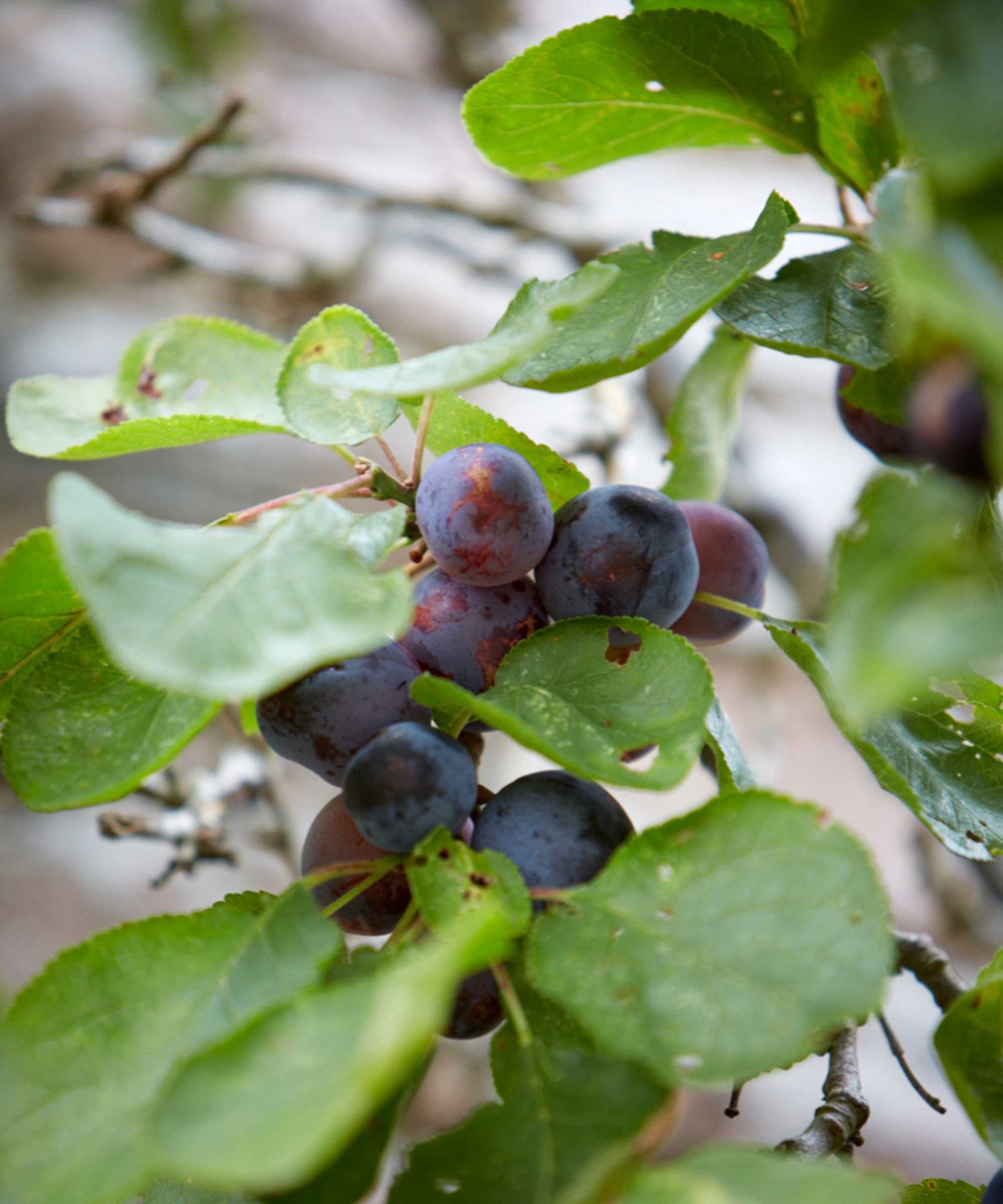
Recover a neglected tree over several years
What are the common problems with pruning plum trees?
One of the biggest mistakes to make when pruning plum trees is to do so in winter. As mentioned above, this can result in the tree becoming infected with diseases. Instead, be sure to do it in spring or summer only, when the cuts will heal quicker which reduces the risk.
As is the case with pruning many other plants, overdoing it can do more harm than good. So, if you want to enjoy a delicious crop of plums this fall, go easy. Want to know how to prune roses too? Our guide has all the info.
Branches can be susceptible to snapping under the weight of the fruit, although thinning will help to prevent this. If branches do break in your tree, prune them back to undamaged wood at a natural fork.
If, even after reading our tips on how to prune a plum tree, you don't feel 100% confident, consider hiring a professional. It's the safest way to ensure the best results.
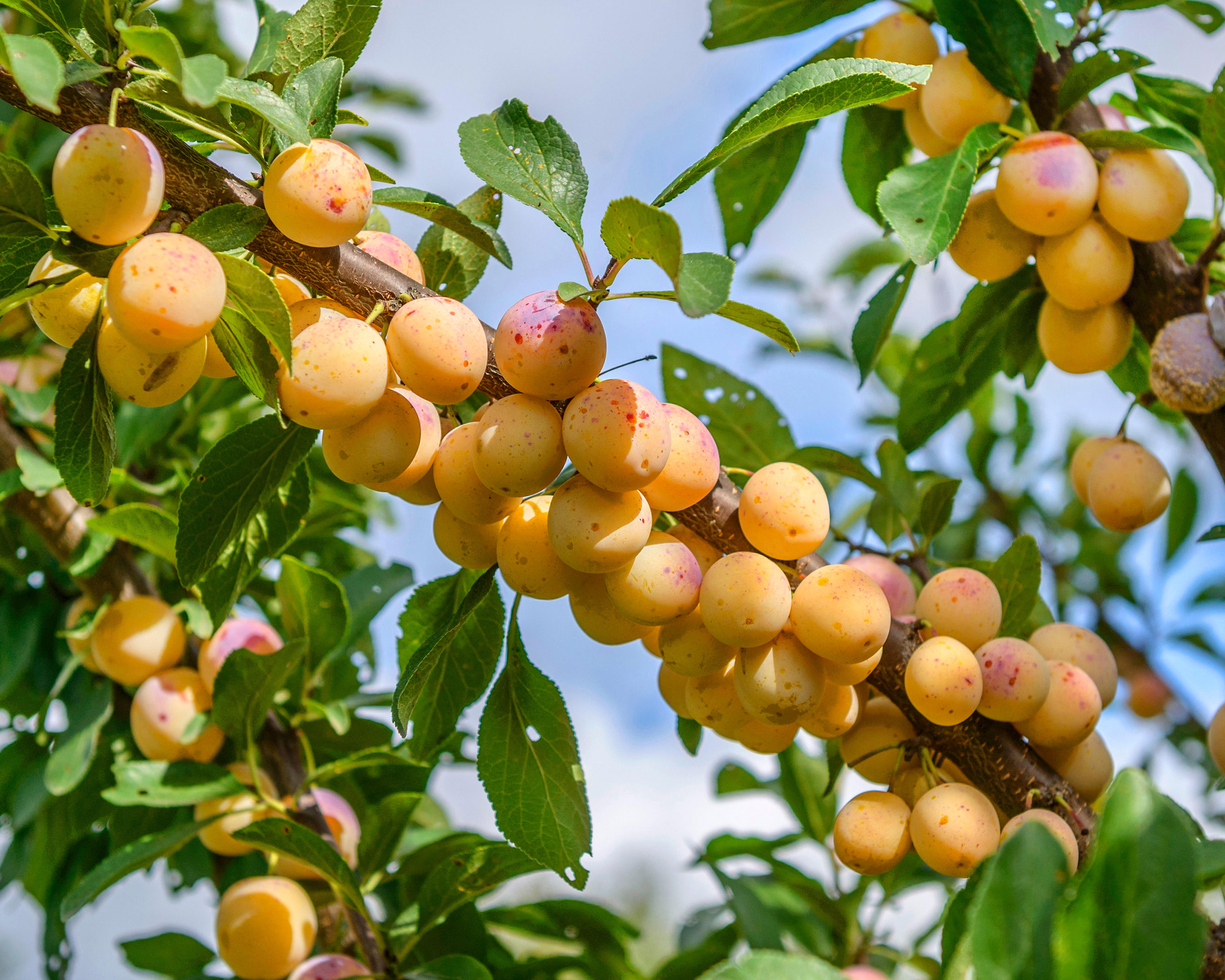
Remember to remove weak or badly placed growth so fruiting branches are strong, healthy and productive
More top tips for pruning plum trees
- When learning how to grow plums, remember: ‘less is more’. Yes, it’s exciting to see new growth on your tree, but the success of your crops relies on careful trimming and pruning.
- Make sure you prune on a dry day wherever possible.
- Use a pair of your best secateurs or a pruning saw. Make sure they are sharp. Disinfect tools well after each pruning (and in between trees) to minimize the risk of infection.
- Make cuts just above healthy buds, always cutting at a slant.

As assistant editor of Amateur Gardening magazine, Janey's gardening passion was fostered from an early age, when her amazing mum had her deadheading hydrangeas, mulching roses, and propagating strawberry plants from runners for school open days. She's also taken part in lots of conservation and rewilding projects for the RHS and TCV as a way of exploring her horticultural horizons.

